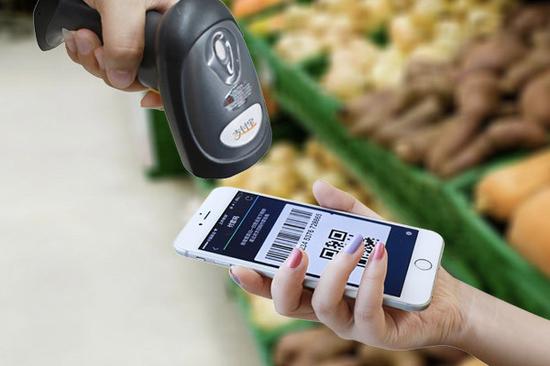In the country’s eastern megacities, using smartphones to pay at the grocery store is completely normal. Due to the e-commerce boom and the infrequent use of bank cards, the habit of online payments in China has spread quickly. This type of transaction can be performed by a computer or a mobile phone. But Chinese people far prefer to use their mobiles as a payment terminal. In just a few years, mobile phones have become a digital wallet available at almost any occasion, and in 2016, China outpaced the United States regarding the number of transactions completed on mobile.
Online payments in China: Mobile phones are preferred to computers
In 2015, the gross merchant value generated by Chinese third-party online payments via computers reached 1.644 billion dollars, with a growth rate estimated at 46.9 % compared to the year before, according to iResearch. The fast development of this transaction mode in the last few years is partly explained by the e-commerce boom. On China’s Western regions, access to some unique products is much more difficult than in coastal areas. E-commerce solutions are therefore particularly successful in those regions, and as such, so are online payment methods. In the third quarter of 2015, 23.2% of online transactions resulted from e-shopping.
However, online transactions are preferred using a smartphone than a computer. Online payments in China through computers should keep growing until 2019, but the growth is set to diminish progressively while mobile use spreads.
Alipay and WeChat Wallet are China’s two primary online payment applications
E-commerce leader Alibaba dominates the market with its own payment service Alipay, which is integrated with each of the group’s commercial platforms. But most online payments are made by phone: in 2015, 65% of Alipay’s 450 million clients used their mobile to pay while PC payment continued to lose momentum.
This is one of the main reasons that Alipay lost market shares in this segment that same year (reaching 47.5%). On the contrary, 68.4% of Alipay’s traffic is concentrated on mobile online payments. Alipay is followed by Tenpay, Tencent’s service whose main tool is WeChat Wallet, a mobile payment solution directly integrated with the chat application WeChat.
Smartphones endorsed the role of virtual wallets on the Internet…
Altogether, 65% of online transactions in 2015 were made from a mobile device, according to a study from Alipay published in January 2016. This represents a progression of almost 50% compared to the year before. Regarding value, the transactions settled by third party mobile payments reached 5.5 trillion dollars in 2016 according to iResearch. This sum was generated by 469 million mobile payment users that year, which represents a 31% increase to the user number of 2015, according to the Ministry of Industry and Information.
One of the reasons for this phenomenon is the fast democratization of smartphones in China. Chinese people are using their mobile to shop, watch videos, prepare their next holiday trip, or book a table at a restaurant. All those services lead to transactions, which are naturally performed from smartphones. Mobile payment development can also be explained by the little use of bank cards in China. One out of five consumers owns one, but very few use it to pay for purchases on the Internet.
… and in the real world with proximity mobile payment
In this context, another type of transaction specific to Chinese consumers has emerged: proximity mobile payments. This transaction happens when, instead of paying in cash, customers use the virtual wallet on their mobile app. According to E-marketer, this payment solution was used at least twice as much in 2015 than in 2014, and by 2020, almost half of all smartphone owners will use proximity mobile payment.
For now, according to E-marketer, this service is mostly used by the 21-39-year-old population living in first tier cities. This proximity mobile payment solution should develop further once it is adopted by retailers in smaller urban areas.
Mobile payment should remain popular even with charges
However, Alipay and its recent competitor WeChat Wallet did not wait to add a commission to their offer: they first seduced and retained young urbanites with long commercial battles during the Chinese New Year. But now that they have developed many enthusiastic users, both groups soon set up a limit for money transfers (137 dollars for WeChat and 2,851 dollars for Alipay), above which users must pay a commission. Despite this measure, Daxue Consulting expects online mobile payments to have a bright future in China.
To know more about Online payments in China, please don’t hesitate to contact us.
Stay Up To Date! Sign up for our Newsletter to Receive the Last Updates.
Source Featured Picture: https://www.chinainternetwatch.com/tag/mobile-payment/





